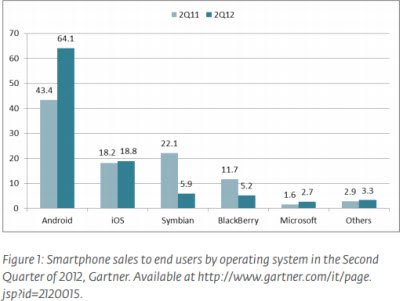The coming year, 2013 will witness malware and its upcoming variants targeting mobile operating systems more, predicts Cybersecurity Software maker, Eset. The company predictions outline key issues IT managers would need to face in the year ahead.

Mobile Malware in 2013
The Eset Trend Report for 2013 prepared by the company indicate an exponential growth of mobile malware threats in the coming year. It suggests, the variety of malware targeting mobile devices would not only grow at an exponential rate but continue to evolve rapidly.
Mobile malware goes hand in hand with technology! The launch of devices like BlackBerry and iPhone (2007), the smartphone and tablet market has rapidly evolved in several areas, thanks to technology (better hardware and more optimized software), market (sales, amount of users, number of applications), and connectivity and infrastructure (3G and 4G LTE).
This sector has experienced considerable growth as opposed to “traditional” computer markets, whose sales have seen significant reductions as a result of the growth of mobile devices. As a result, the rapid adoption of smartphones, particularly the ones running Android and the use of such devices for making monetary transactions and storing sensitive information has driven the interest of cyber criminals more in the mobile market.
Moreover, the year-over-year growth rate in the mobile market segment has led cybercriminals to focus more time and resources in developing threats for these devices.

The first statistic demonstrating this dizzying rise of mobile malware – one that also allows a determination that the trend for 2013is one of exponential growth of malicious code for Android– is that in 2012 the amount of unique detections grew 17times globally compared to 2011…With this background, it can be asserted that the malware growth for Android will rise much more rapidly in 2013.
The report further adds that in 2013, over 500 million people will access banking services from their smartphones. This will only inspire cyber criminals more to develop new variety of malware to steal sensitive information, thus gaining illicit revenue.
In addition to this, malware developers will continue to spread malware through infected websites and other traditional methods.
For reading the complete report, click here.
Leave a Reply